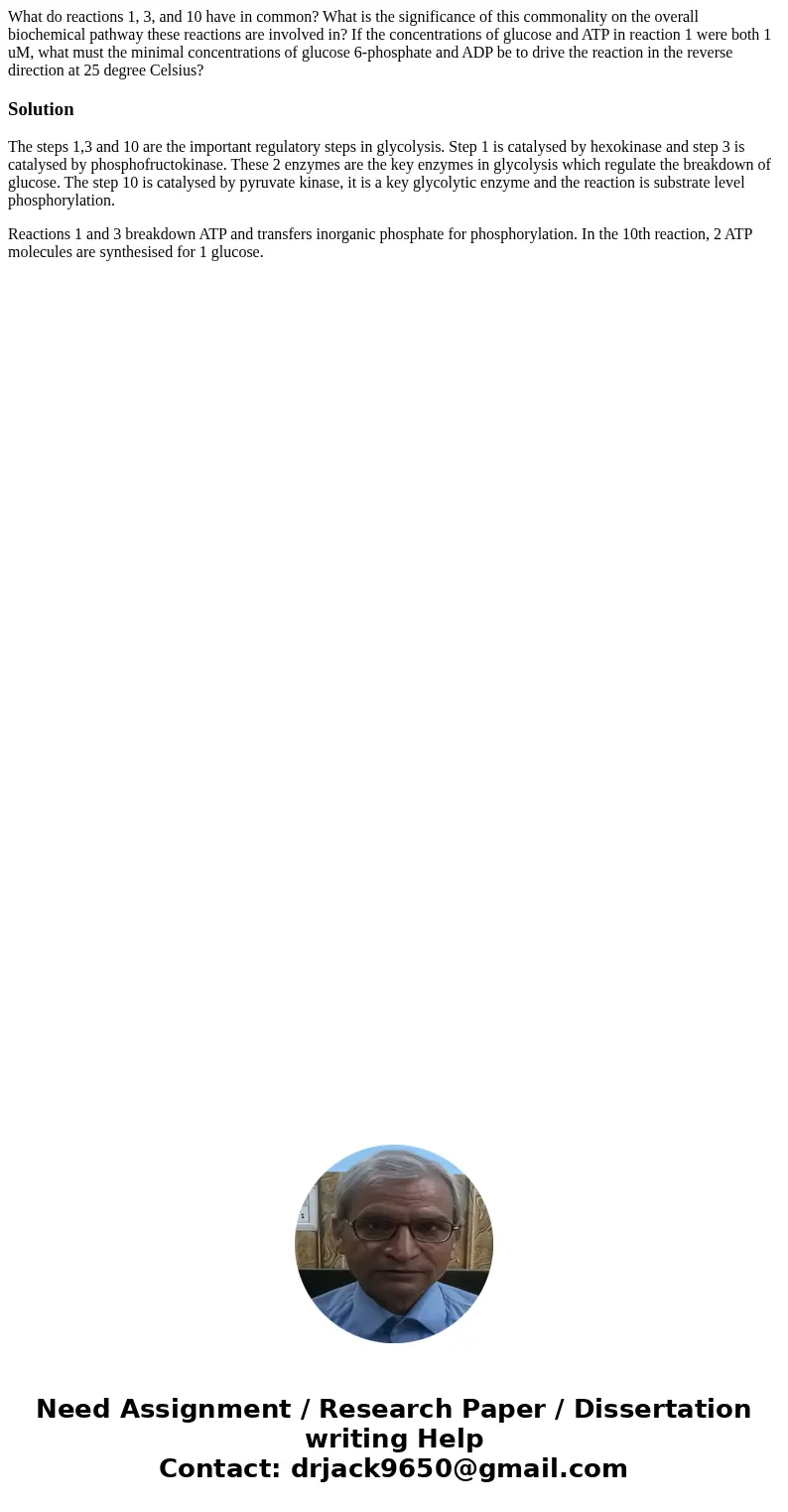What do reactions 1 3 and 10 have in common What is the sign
What do reactions 1, 3, and 10 have in common? What is the significance of this commonality on the overall biochemical pathway these reactions are involved in? If the concentrations of glucose and ATP in reaction 1 were both 1 uM, what must the minimal concentrations of glucose 6-phosphate and ADP be to drive the reaction in the reverse direction at 25 degree Celsius?
Solution
The steps 1,3 and 10 are the important regulatory steps in glycolysis. Step 1 is catalysed by hexokinase and step 3 is catalysed by phosphofructokinase. These 2 enzymes are the key enzymes in glycolysis which regulate the breakdown of glucose. The step 10 is catalysed by pyruvate kinase, it is a key glycolytic enzyme and the reaction is substrate level phosphorylation.
Reactions 1 and 3 breakdown ATP and transfers inorganic phosphate for phosphorylation. In the 10th reaction, 2 ATP molecules are synthesised for 1 glucose.

 Homework Sourse
Homework Sourse